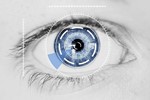FEATURED HEALTH IT NEWS
 4 Ways AI Is The Future Of Hospitals
4 Ways AI Is The Future Of Hospitals
Hospitals are often caught in a tug-of-war choosing between time-tested methods and the razor’s edge of new research when it comes to adopting new treatments, processes, and technology. Venturing into the uncharted waters of advanced technologies and innovative techniques can be unsettling, but the payoff for hospital systems and patients can lead to improved patient experience, quality, and outcomes.
-
Consumer-Oriented Patients Expect A Better Technology Experience
Feeling much like an Olympic gymnast’s acrobatic routine, patients’ healthcare experience over the past 18 months has endured a dizzying series of twists, turns, and somersaults—albeit without the benefit of Dramamine. Patients found themselves caught up in COVID-induced disruptions and often didn’t know if or when they could safely access care. Thankfully now, things are returning to some semblance of normalcy as the vaccine proliferates and cases plunge.
-
Changing Patient Communications Preferences And The Race For Providers To Adapt
The Japanese scholar Kakuzō Okakura once said, “The art of life lies in a constant readjustment to our surroundings.” Or to put it in more colloquial terms—change sucks, but it’s a part of life, so deal with it.
-
Keeping Patients Top Of Mind: Connected, Informed, And Educated
More and more, the same holds true for our healthcare communications. Increasingly, providers are shifting to more efficient patient communication channels that emphasize accessibility, convenience, and haste. Though syncing communication preferences is always the first step to being on the same wavelength with patients, best practices reveal that some mediums are better than others when speed and timing are must-haves.
-
Making Strides Toward Greater Success In Virtual Care
A well-known proverb posits that necessity is the mother of invention. And while telehealth slightly predates the worldwide COVID-19 calamity, we were sure glad — and relieved — the technology was available when the pandemic threatened in-person care.
-
Bridging The Digital Divide: Virtual Care Accessibility Options For Everyone
This month marks one year since COVID-19 mushroomed across the planet and changed everything. For healthcare providers, the pandemic has been a major disruption that led to in-office safety protocols and created a chilling effect as patients refrained from scheduling the care they needed. Medical practices across the country resorted to reducing their hours or temporarily shuttering their offices. For many in the healthcare business, the reduction in appointments and closures precipitated revenue shortfalls of as much as 50 percent.
-
Eye-Tracking In Healthcare: Medical Diagnostics, Health Equity, And The COVID-19 Response
Commonly used as an assistive technology solution to support the communication and computing needs of severely handicapped individuals, eye-tracking is gaining momentum across a broader spectrum of industries as hardware and software solutions continue to evolve. Among those industries, healthcare stands to benefit greatly from advancements in the field of precision eye-tracking. Innovative and emerging use cases are ushering medical eye-tracking to a new forefront.
- COVID-19 Communications: Meeting Patients Where They Are
- Health System CIO Priorities—Changes Ahead Due To Covid-19
- New Communication Methods Can Help Ring In New Year Of Greater Patient Engagement
- COVID-19 And Physician Burnout: What Hospitals Can Do To Help
- Setting The Facts Straight: 3 Common Misconceptions When Applying Automation To The Revenue Cycle
- Predictive Analytics And AI Trends Impacting Healthcare IT In 2021
- Why COVID-19 Is Forcing Us To Axe The Fax And Embrace Technologies Enabling Better Communication Between Providers
- Looking To 2021: Why We Need To Focus On Virtual Care
- 2021 Healthcare IT Landscape: 5 Predictions For Voice And Chat
- Redefining Healthcare – How COVID-19 Brought Digital Medicine To The Forefront
HEALTH IT NEWS
-
GE HealthCare Unveils Allia Moveo, Designed To Deliver Next-Level Mobility, Workflow And Comfort In The Interventional Suite12/1/2025
GE HealthCare today unveiled the Allia Moveoi, an image guiding solution designed to enhance mobility and flexibility and redefine the way clinicians deliver care in the interventional suite.
-
Owlet And Locus Health Partner To Seamlessly Deliver Infant Health Data Into Remote Patient Monitoring Programs11/19/2025
Owlet, Inc. the pioneer of smart infant monitoring, today announces a partnership with Locus Health, a leader in remote patient monitoring, for more integrated infant health management.
- ONC Certification Of Oracle's AI-Powered EHR Marks Turning Point For The Healthcare Industry
- Azara Healthcare Releases New Risk Adjustment Capabilities In EHR Plug-In For athenaOne Via The Athenahealth Marketplace
- Duncan Regional Hospital Becomes First In U.S. To Implement BD Alaris™ EMR Infusion Interoperability With MEDITECH
- Minze Health Announces Collaboration With Medtronic To Support Patients With Overactive Bladder In EMEA
- Natera Integrates With Flatiron Health's OncoEMR Platform
- HealthTree Foundation Expands Medical Records Connections To Include Flatiron Health & CareSpace Electronic Health Record Systems
- Healthcare Fraud Shield (HCFS) Launches RecordPlus™ AI-Powered Solution To Combat Medical Record Review Challenges








